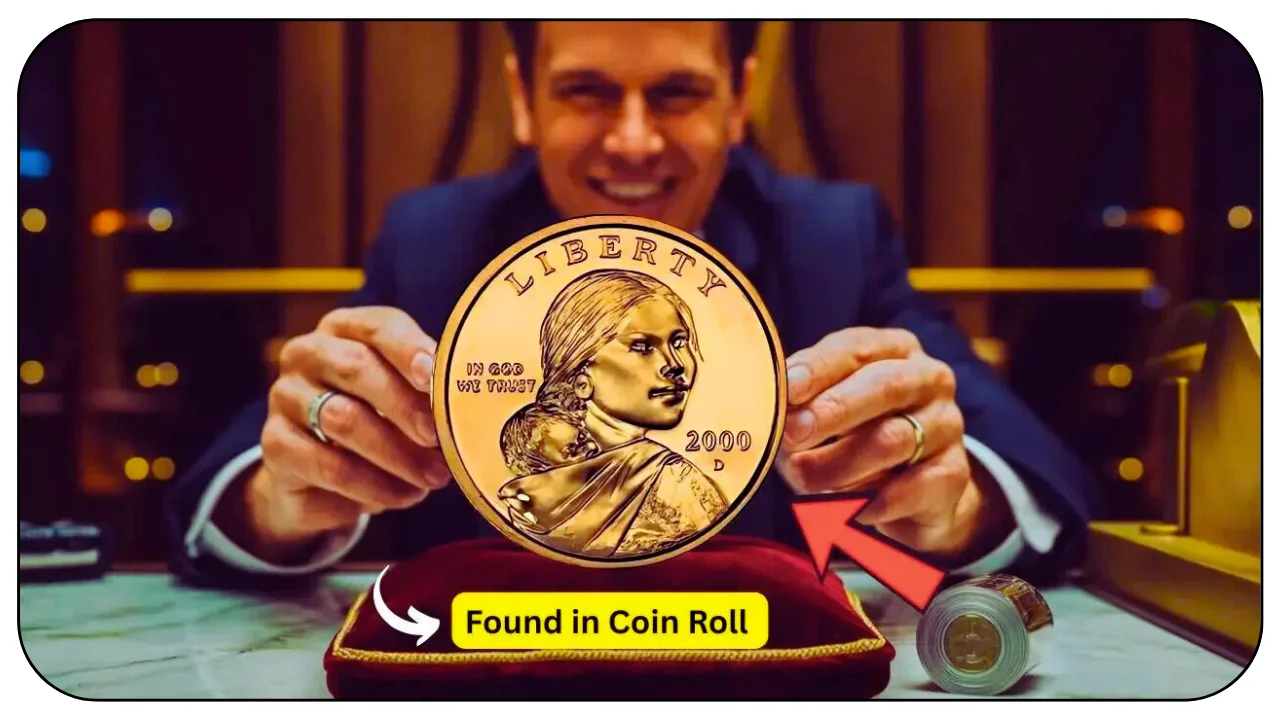A Sacagawea Dollar, mistaken for a cheap arcade token, turned out to be a $1.2 million treasure after a sharp-eyed collector spotted it in a California arcade in early 2025. This golden-colored coin, often ignored because it looks like a game token, stunned the coin world when it hit the auction block. Sacagawea Dollars, first minted in 2000, are still in circulation, and rare versions like this one could be hiding in your wallet or junk drawer. Here’s why this coin is so valuable, how to spot a rare one, and why you should check your coins now.
A Coin with a Unique Story
The Sacagawea Dollar was introduced to honor the Native American woman who guided Lewis and Clark on their expedition. With its golden hue and smooth edge, it’s often confused with tokens or quarters, leading many to overlook it. This $1.2 million coin was found in a pile of arcade tokens by a collector who noticed its unusual weight and design. After closer inspection, it was identified as a rare error coin, sparking a frenzy among collectors and driving its value sky-high at a 2025 auction.
Why It’s Worth Millions
This Sacagawea Dollar is a 2000-P “Cheerios” variety, originally included in Cheerios cereal boxes as a promotion. Only 5,500 were distributed, and this one had a rare “Wounded Eagle” reverse error, where the eagle’s tail feathers appear damaged due to a minting mistake. Graded MS-68 by PCGS, it’s in near-perfect condition, with a bright, unblemished surface. Its rarity, error, and pristine state made it a collector’s dream, fetching $1.2 million, one of the highest prices ever for a Sacagawea Dollar.
| Feature | Details |
|---|---|
| Year | 2000-P |
| Error Type | Wounded Eagle Reverse |
| Mint Mark | P (Philadelphia) |
| Grade | MS-68 (PCGS) |
| Auction Value | $1.2 Million |
| Estimated Surviving | ~5,500 (Cheerios promotion) |
How to Spot a Rare Sacagawea Dollar
You don’t need to be a coin expert to find a valuable Sacagawea Dollar. Start by checking the date and mint mark—look for 2000-P coins, as these include the rare Cheerios variety. On the back, examine the eagle’s tail feathers for the “Wounded Eagle” error, where lines look scratched or incomplete. The coin should weigh 8.1 grams and have a golden color, not silver like quarters. A magnifying glass can help, but the error is often visible to the naked eye.
-
- Check for 2000-P on the front under Sacagawea’s portrait.
-
- Look at the eagle’s tail feathers for the Wounded Eagle error.
-
- Confirm the coin’s golden color and smooth edge.
-
- Compare with pictures of Cheerios dollars online.
Where These Coins Turn Up
Sacagawea Dollars are still in circulation, popping up in places like arcade token piles, cash registers, or your own change. The Cheerios promotion coins were given out in cereal boxes, so many ended up in households, forgotten in drawers or mixed with other coins. This arcade find shows that rare coins can surface anywhere—vending machines, tip jars, or even your kid’s piggy bank. With only about 5,500 Cheerios dollars out there, every Sacagawea Dollar is worth a second look.
What to Do If You Find One
If you think you’ve got a rare Sacagawea Dollar, don’t toss it or spend it! Handle it with care using gloves or a cloth to avoid scratches, and store it in a protective sleeve. Take it to a coin dealer or a grading service like PCGS or NGC to verify its authenticity and condition. This arcade token mix-up turned into $1.2 million because the collector got it checked. Your coin could be a hidden treasure, so don’t let it slip away.
The Sacagawea Dollar’s golden shine hides a potential fortune, as this arcade find proved. Its rarity, unique errors, and everyday circulation make it a thrilling hunt for collectors. Next time you grab change or sort through old coins, take a closer look. That “token” you almost ignored could be a $1.2 million gem waiting to change your life!
